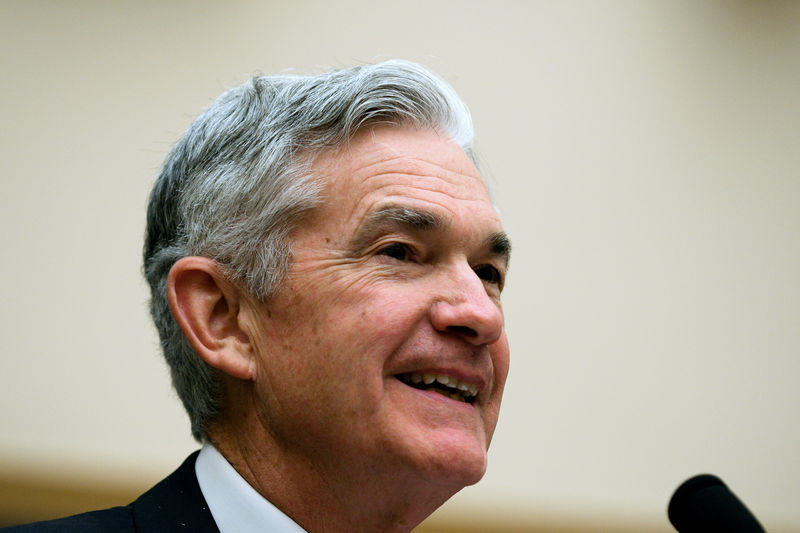(Bloomberg) -- Federal Reserve Chairman Jerome Powell said the central bank can be patient as it assesses risks to a U.S. economy with good momentum and will adjust policy quickly if needed.
“With the muted inflation readings that we’ve seen, we will be patient as we watch to see how the economy evolves,” Powell said Friday on a panel with his predecessors Janet Yellen and Ben Bernanke at the American Economic Association’s annual meeting in Atlanta.
“We will be prepared to adjust policy quickly and flexibly and to use all of our tools to support the economy should that be appropriate to keep the expansion on track,” he said, adding “there is no pre-set path for policy.”
U.S. stocks extended gains on his remarks.
Powell’s Fed raised interest rates four times last year and projections from its Dec. 19 meeting show officials expect two more hikes in 2019. Sliding equity prices, weakness abroad and mixed economic data at home have prompted calls for the Fed to put rates on hold, but the U.S. labor market remains red-hot. Data released earlier on Friday showed U.S. employers added the most workers in 10 months as wage gains accelerated.
Against that backdrop, Powell said most of the hard data we see coming in remains quite solid. Still, recent declines in financial markets reflect concerns among investors about downside risks to the outlook, he said.
In response to questions, Powell also signaled a willingness to include changes to the Fed’s gradual run-off of its balance-sheet in any review of monetary policy.
President Donald Trump has criticized the Fed chief for raising interest rates and Bloomberg News reported Dec. 21 that the president had discussed firing Powell. The Fed chairman, responding to a question about what he would do if Trump asked him to step down, said he would not resign.
Mixed Data
Powell and his colleagues at the U.S. central bank are weighing conflicting signals on the U.S. economy as they try to ensure that the Fed achieves its congressional mandate of low, stable inflation and full employment over the long term.
Markets have gyrated in recent months and manufacturing gauges have slowed as weakening global growth and a trade spat between the U.S. and China deepen uncertainty.
Consumer sentiment indexes have also begun weakening, and housing figures showed deceleration throughout much of 2018.
Despite that gloomy backdrop, the Fed has been close to achieving its inflation goal of 2 percent. Price gains hovered right around there for much of 2018, though the Fed’s preferred index has dipped to 1.8 percent in November.
The Fed is also below its estimates of full employment. U.S. nonfarm payrolls increased by 312,000 in December, easily topping all forecasts. Average hourly earnings advanced 3.2 percent from a year earlier, matching the fastest pace since 2009. And the jobless rate rose from a five-decade low to 3.9 percent, reflecting more people actively seeking work.
